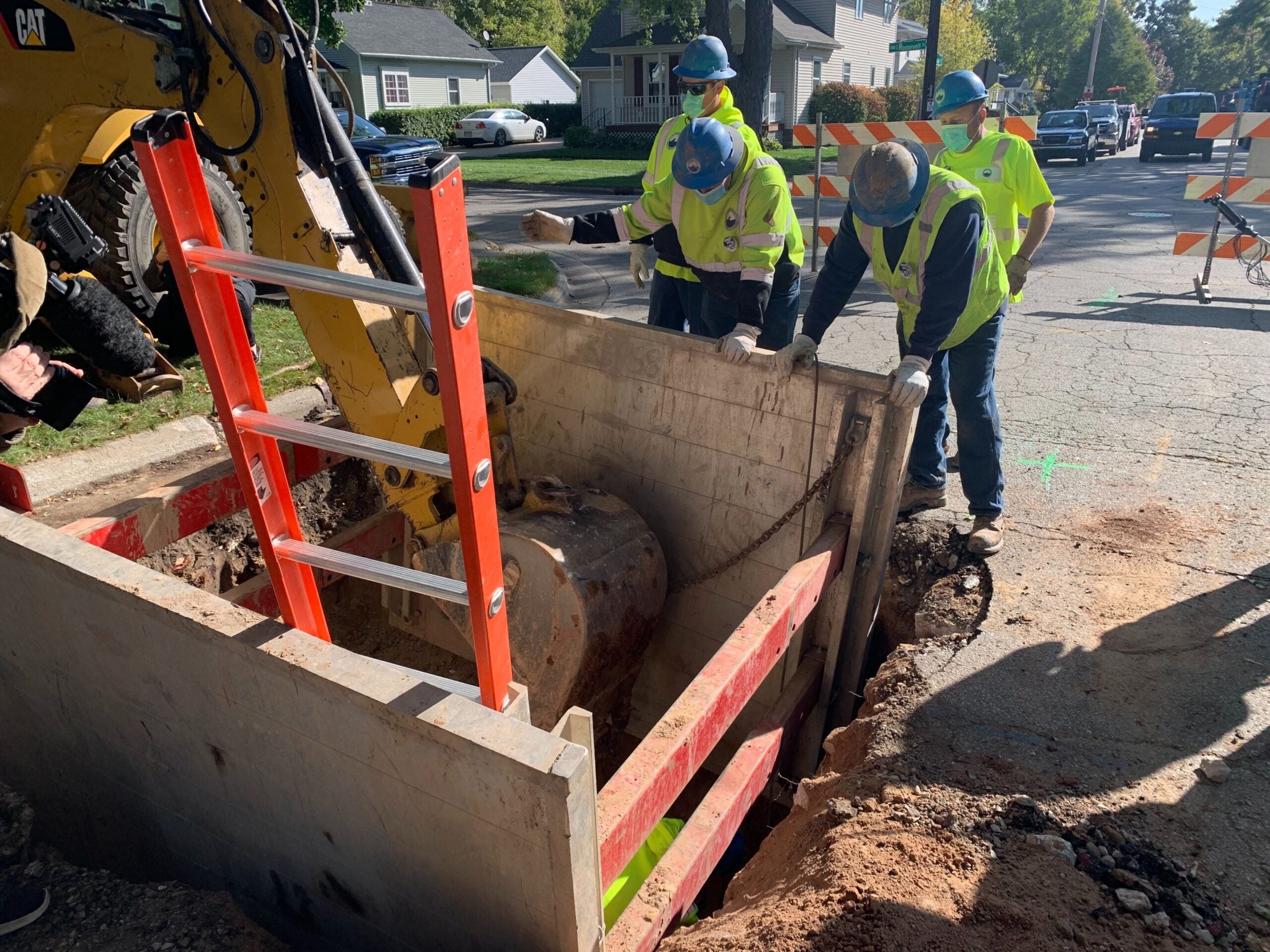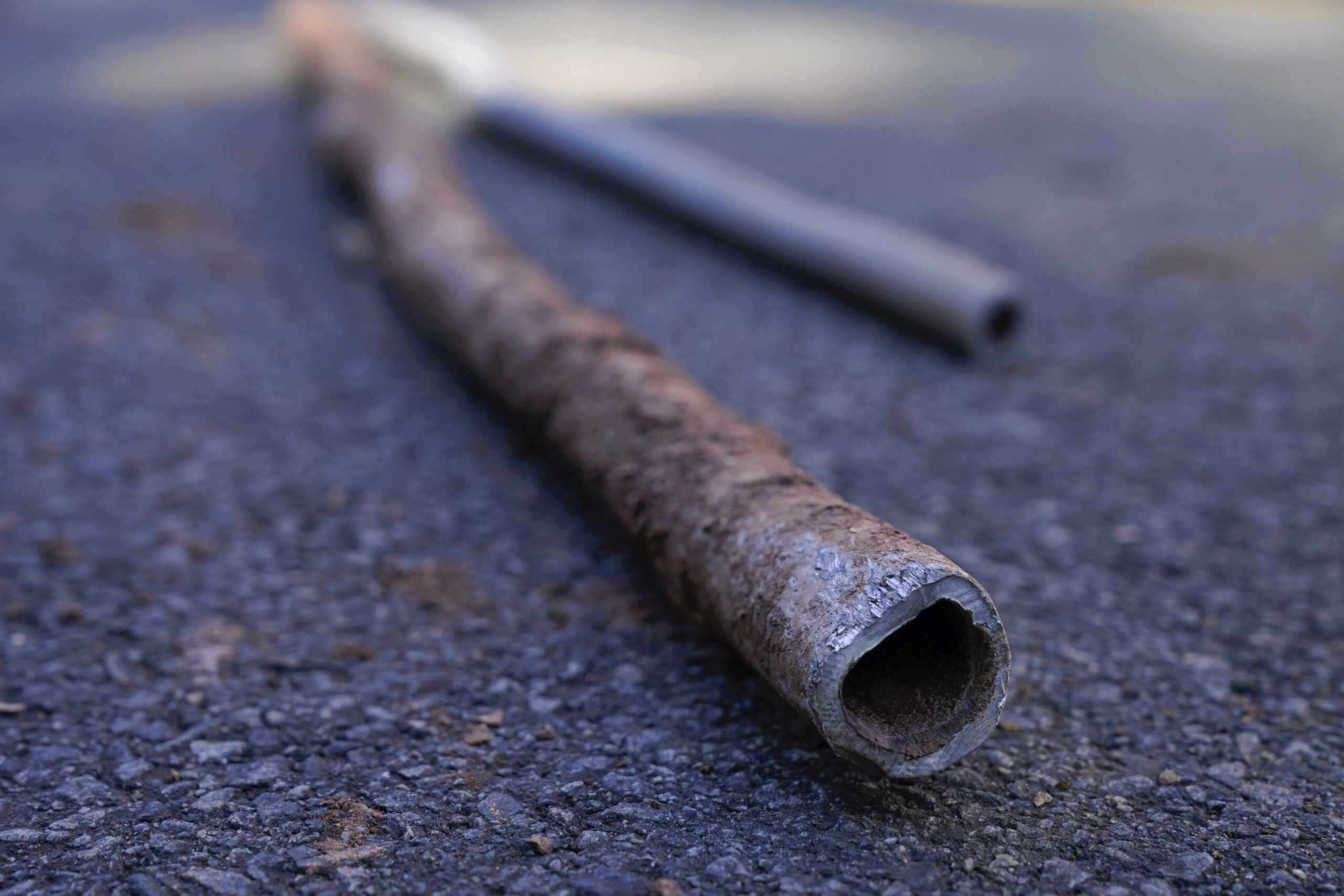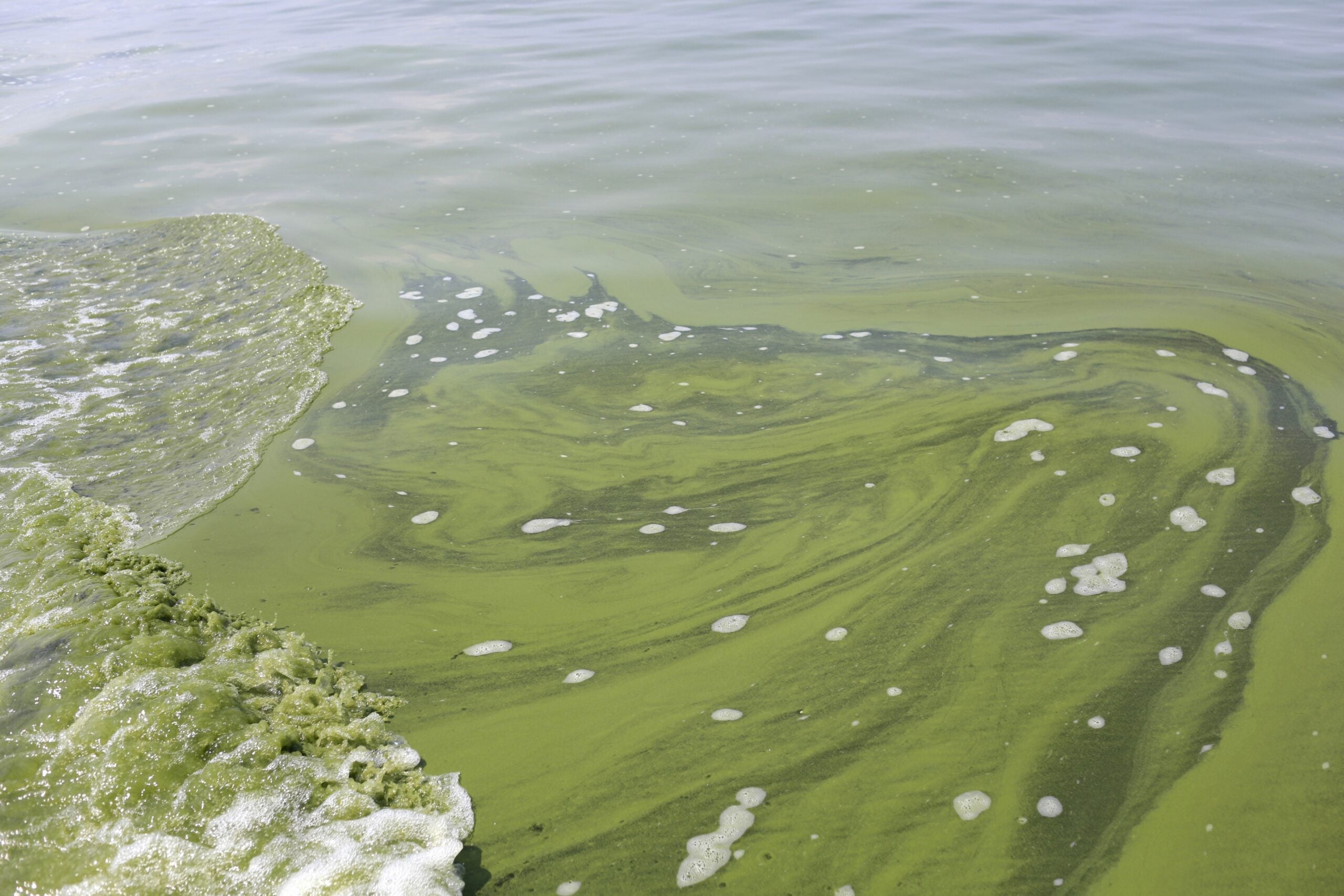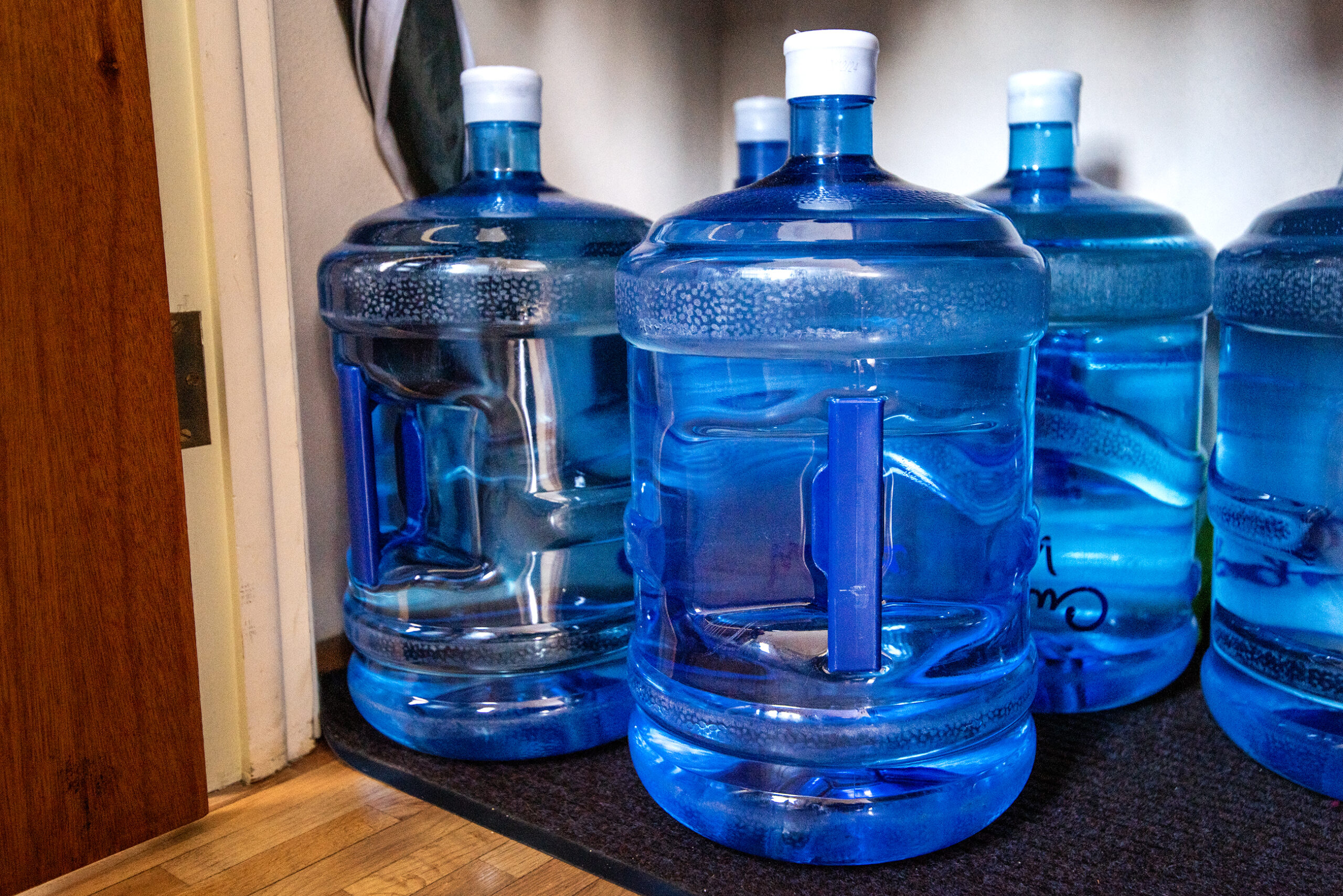Public water supplies will have to test schools and day care centers for lead in drinking water under an overhaul of a rule finalized by the U.S. Environmental Protection Agency. But critics say the changes fail to speed up replacement of lead pipes that wear away and pollute drinking water.
EPA Administrator Andrew Wheeler announced the final rule in a virtual press conference Tuesday.
It’s the first major update of the Lead and Copper Rule since 1991. The rule aims to keep drinking water safe from lead and avoid water crises like the one in Flint, Michigan, that put a national spotlight on the issue. Children are more vulnerable to lead poisoning, which can cause developmental issues among other health problems.
News with a little more humanity
WPR’s “Wisconsin Today” newsletter keeps you connected to the state you love without feeling overwhelmed. No paywall. No agenda. No corporate filter.
The changes require public water supplies to test drinking water at schools and day care centers, as well as map all their lead service lines.
“The new rule will better protect children where they learn and play,” said Wheeler.
State Sen. Rob Cowles, R-Green Bay, said he’s glad the EPA has “broken nearly 30 years of stagnation” to prioritize removal of lead lines and require testing of schools and day care centers. Cowles authored a bill to require testing of schools and day care centers, but it failed to pass the Legislature this year.
“It’s pivotal that all levels of government continue to learn from each other’s approaches, and stay involved in the fight to invest in our future by protecting children’s health,” said Cowles.
Cowles said the changes help to better identify at-risk areas and launch local efforts to reduce lead exposure in drinking water.
However, the new rule maintains the current action level of 15 parts per billion under which systems are required to replace lead pipes. The final rule also gives water systems more time to replace lead service lines if they test above that threshold.
Under the old rule, water systems with lead levels above 15 parts per billion were required to replace 7 percent of their lead pipes each year. The new rule requires systems with elevated levels to replace a minimum of 3 percent of lead lines each year. Wheeler argued the final rule “requires more replacements to take place than ever before,” saying loopholes in enforcement resulted in water supplies replacing about 1 percent of lead pipes each year.
Environmental groups like Clean Wisconsin see the new rule is a missed opportunity to do something “bolder and bigger” to address lead in drinking water, according to staff attorney Evan Feinauer.
He said the rule included some improvements like updating sampling procedures to better identify water systems with high lead levels.
“But those are kind of nibbling around the edges of the problem, which is we got all these lead service lines,” said Feinauer. “They’re still being used for water until we replace them. We’re kind of just putting a Band-Aid on the problem.”
The Environmental Protection Network called the changes a “heartbreaking failure” for communities impacted by lead, according to Betsy Southerland, EPN member and former director of the Office of Science and Technology within the EPA’s Office of Water.
“Public health experts hoped that the one positive thing resulting from the horrific Flint crisis is that the new rule would accelerate replacement of lead service lines and improve enforcement of corrosion controls,” said Southerland in a statement. “Instead, Trump’s EPA has finalized a rule that complicates and impedes enforcement and does nothing to accelerate the replacement of lead service lines.”
The final rule sets a warning level of 10 parts per billion for water systems. At that level, water utilities would be required to study corrosion or optimize their water treatment. The trigger level also requires public water supplies to work with the state to set an annual goal for replacing lead service lines.
There’s no timeframe for public water supplies to complete an inventory of lead lines under the EPA’s final rule.
Wisconsin’s Public Service Commission began requiring utilities to track customers’ lead service lines several years ago. State water utilities have already identified more than 176,000 lead service lines that are publicly owned and more than 148,000 private lead lines.
The American Water Works Association has supported the rule’s requirements for utilities to develop inventories, but it opposed changes requiring them to test for lead in drinking water at schools and day care centers.
A report released last year gave the state a failing grade for not preventing lead in school drinking water. State health data shows nearly 4,000 children in Wisconsin had elevated blood lead levels in 2018. Lead pipes are the most common source of lead in drinking water. Children can also be exposed to lead through lead-based paint and other lead-based products.
Gov. Tony Evers proposed borrowing $40 million to replace lead lines under the current budget. Republican lawmakers rejected that proposal, saying it would be too expensive.
GOP lawmakers have supported local efforts to address issues or install water filtration systems. They also backed proposals that allowed utilities to provide financial assistance to customers for replacement of water lines.
Clean Wisconsin’s Feinauer said the state could devote funding to help replace lead service lines or make it easier for communities to raise money to remove lead pipes.
“And, we’ve got to do it without sacrificing something else in the public sector that’s of value, particularly the education system,” said Feinauer. “Because, otherwise, what’s going to happen is we’re just consigning yet another generation of kids to exposure of high levels of lead in the water.”
This fall, the Green Bay Water Utility finished replacing all 1,781 lead lines owned by the utility and 247 lead lines owned by customers.
Madison was the first major utility in the nation to replace around 8,000 known public and private lead service lines, according to Wisconsin Watch. The removal of lines cost roughly $19 million and took nearly a decade to complete.
Milwaukee has more than 70,000 lead service lines that need to be replaced, which could cost the city more than $750 million.
The Wisconsin Department of Natural Resources receives funding from the EPA to offer financial assistance to communities through its Safe Drinking Water Loan Program. The agency is also providing around $63 million to communities for private lead service line replacements.
Wisconsin Public Radio, © Copyright 2026, Board of Regents of the University of Wisconsin System and Wisconsin Educational Communications Board.





